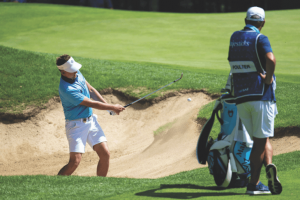The R&A And The USGA Release 2016 Edition Of Rules Of Golf
The R&A and the United States Golf Association (USGA) have announced the publication of the 2016 edition of the Rules of Golf that takes effect on 1st January 2016. The new Rulebook is the culmination of the normal four-year review cycle and is a collaborative work by The R&A and the USGA that applies worldwide to all golfers.
Here are some of the most significant changes in the 2016 edition:
• Withdrawal of Rule on Ball Moving After Address – Rule 18-2b (Ball Moving After
Address). This means that if a ball at rest moves after the player addresses it, the player is no longer automatically deemed to have caused the ball to move. A one-stroke penalty under Rule 18-2 will be applied only when the facts show that the player has caused the ball to move.
• Limited Exception to Disqualification Penalty for Submission of Incorrect Score Card – A new exception has been introduced to Rule 6-6d (Wrong Score for Hole) to provide that a player is not disqualified for returning a lower score for a hole than actually taken as a result of failing to include penalty strokes that the player did not know were incurred before returning the score card. Instead, the player incurs the penalty under the Rule that was breached and must add an additional penalty of two strokes for the scorecard error. In all other cases in which a player returns a score for any hole lower than actually taken, the penalty will continue to be disqualification.
• Modification of Penalty for a Single Impermissible Use of Artificial Devices or Equipment
– The penalty for a player’s first breach of Rule 14-3 (Artificial Devices, Unusual Equipment and Abnormal Use of Equipment) during the round has been reduced from disqualification to loss of hole in match play or two strokes in stroke play. The penalty for any subsequent breach of Rule 14-3 will continue to be disqualification.
• Prohibition on Anchoring the Club While Making a Stroke – As announced in May 2013, the new Rule 14-1b (Anchoring the Club) prohibits anchoring the club either “directly” or by use of an “anchor point” in making a stroke. The penalty is loss of hole in match play or two strokes in stroke play.
David Rickman, Executive Director – Rules and Equipment Standards at The R&A said, “We continually look at ways we can improve and clarify the Rules of Golf. The R&A and the USGA collaborate closely and we consult with our respective national and international advisory members to produce a code of Rules that is relevant to all golfers around the world.”
Thomas Pagel, Senior Director of Rules of Golf at the USGA, said, “The objective with each four year cycle of the Rules is to monitor developments in the game and, when appropriate, to respond with changes that keep the best interests of the game in mind. The amendments for 2016 preserve and enhance the essential principles of the Rules, while at the same time ensuring that they reflect the evolution of the game.”
Additional Comments on the Principal Changes
Under Rule 18-2b, a player whose ball moved after address was automatically presumed to have caused the ball to move. In 2012, an Exception to Rule 18-2b was introduced to cover situations where it was known or virtually certain that the player had not caused the ball to move, but the application of that standard was not always clear. The withdrawal of Rule 18-2b means that there no longer will be any presumption and that the same overall test in Rule 18-2 will apply to all actions by the player: if the facts show that the player’s addressing of the ball or other actions caused the ball to move, the player will incur a one stroke penalty.
The introduction of the new Exception under Rule 6-6d will maintain the importance of returning an accurate score card by penalising the player two strokes for the score card error in addition to the penalty for the original underlying breach of the Rules. In all other cases where a player returns a score card with a score lower than actually taken on a hole, the player will continue to be disqualified.
In addition to the revised penalty for a player’s first breach of Rule 14-3 during a round, a statement has been introduced at the beginning of Rule 14-3 to explain that the governing bodies are guided by the principle that “success should depend on the judgment, skills and abilities of the player” in determining whether use of any artificial device or item of equipment is in breach of the Rule.
The R&A and the USGA announced in 2013 that new Rule 14-1b prohibiting anchoring the club in making a stroke would take effect in the 2016 edition of the Rules. The Rule was adopted following an extensive review by both organizations. For an explanation of the reasons for adopting Rule 14-1b and for guidance on applying the Rule, see RandA.org/Anchoring.
More detailed information on recent changes and the complete Rules of Golf can be found at RandA.org and usga.org.




